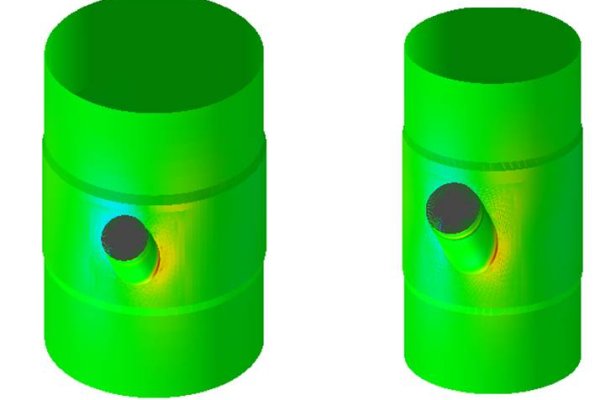This case study examines the stress analysis conducted on a firewater piping system constructed entirely of Glass Fiber Epoxy (GRE) piping. The system featured a buried main firewater ring with partially above-ground fire hydrants and monitors, presenting unique challenges for stress evaluation.
Analysis Methodology
Given the extensive nature of the firewater system, engineers divided the static stress model into several parts. The majority of the piping was buried underground, with various connections to above-ground components such as hydrants, monitors, and delivery lines. System routing and pipe properties used in the analysis were based on data provided by the pipe supplier.
Engineers utilized CAESAR II, a specialized piping stress analysis software, to create the model and compute piping deformations, loads, and stresses. To ensure compliance with industry standards, the computed stresses at each node were extracted and analyzed using an in-house software program developed by Dynaflow Research Group. This program compared the computed stresses against the allowable stresses defined by ISO 14692, a key standard for GRE piping systems.

Identified Modifications
The analysis revealed that several modifications to the original design were necessary to ensure system integrity and compliance. These modifications included:
- Removal of thrust blocks at hydrant branches
- Anchoring hydrant and delivery lines to concrete slabs
- Reinforcement of several locations with additional laminate
- Application of flexible material at specific points
- Implementation of shear keys to limit thermal expansion in long-buried pipe sections
Results and Recommendations
Based on the comprehensive stress analysis, engineers communicated several key conclusions to the client:
- System Integrity: Provided that the system was constructed according to the proposed recommendations, flange loads would remain within acceptable levels for sustained, operational, and hydro test conditions.
- Compliance: The modified firewater system would fulfill the requirements according to ISO 14692 for sustained, operational, and hydro test conditions.
Key Takeaways
- GRE firewater systems require specialized stress analysis due to their unique material properties and installation configurations.
- Dividing large systems into manageable sections allows for more detailed and accurate stress analysis.
- Combining specialized software like CAESAR II with custom analysis tools enables comprehensive evaluation against industry standards such as ISO 14692.
- Modifications to original designs, including the removal of certain supports and the addition of others, may be necessary to ensure system integrity and compliance.
- Effective communication of analysis results and recommendations to clients is crucial for the successful implementation of necessary modifications.
This case study highlights the importance of thorough static stress analysis in the design and modification of GRE firewater systems. By employing advanced analytical techniques and proposing targeted improvements, engineers can ensure the reliability, compliance, and longevity of these critical safety systems.
Related Resources
- Fiberglass Engineering - Consulting Service
- Fiberglass Engineering - Expertise
- Pipe Stress Engineering - Consulting Service
- Introduction to Fiberglass Engineering - Training Course
- Stress Analysis of a GRE Firewater Piping System - Case Study
- Surge and dynamic stress analysis for an offshore wind farm using BOSfluids - Webinar






